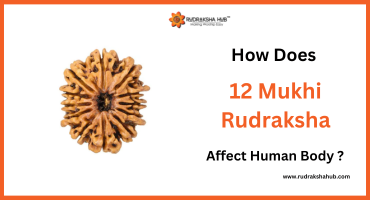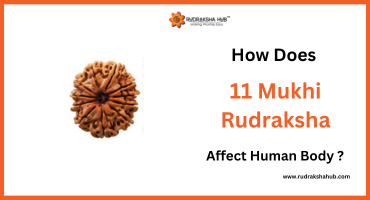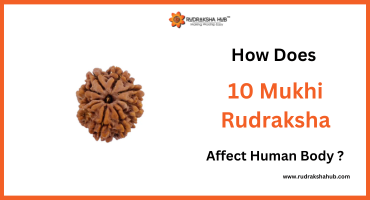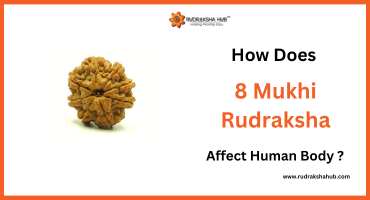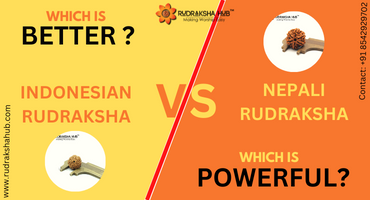
Difference Between Indonesian and Nepali Rudraksha
There has been a lot of chatter about Indonesian origin Rudraksha and Nepali Origin Rudraksha beads online. Most of these are due to the confusion that erupted when the internet sources do not imply the best solution to the issue and they tend to make things confusing or inaccurate for a lot of people. In this blog, we are going to talk about the major differences between Indonesian and Nepali Rudraksha beads and we will also connect them with Indian-origin Rudraksha beads to confirm all the questions.
1.Size
Indonesian Rudraksha beads are smaller in size than average Nepali Beads. The average size of an Indonesian bead starts at 5 mm size and goes up to as high as a maximum of 15 mm size. Beads like 1 Mukhi, Gauri Shankar, and Trijuti can start at a minimum of 18 mm and can go up to be as big as 25 mm There is no Indonesian bead bigger than 25 mm in any category of Rudraksha beads. This is why it is generally smaller and is used to make malas for everyday use and wear. The larger beads in Indonesian beads, which are above the size of 12 mm are worn individually and the smaller beads in the Indonesian Rudraksha variety are used to make malas.
Nepali beads are generally larger in size and they are generally as big as 32 mm in some variations. Nepali beads are generally worn individually or as Kantha due to their large size. Nepali Rudraksha malas are not everyday mala worn naturally by everyone at large. Since the bead size individually is too big, the entire mala becomes too big to wear. This is exactly why Nepali beads are worn individually or as a combination of 1-2 beads in a mala or as Kantha Mala and Indonesian beads are worn in a mala for daily wearing.
2.Color
Indonesian Rudraksha beads are lighter in color and are more significantly light brown in appearance. These beads do not have a dark brown color or are not as appealing as Nepali beads in the beginning, but slowly, these beads will change their color, proving their originality. All Rudraksha beads, whether Indonesian or Nepali turn dark black in color with time. This is proof of Rudraksha’s originality.
Some Indonesian beads like 1 Mukhi Indonesian and 2 Mukhi Indonesian tend to be different from the others. They are generally darker in color and even darker than their respective Nepali beads. This is only due to the climatic impact these beads have faced while in their cultivation time. This does not mean these beads are fake or ineffective. It just means these beads are different and they have a difference in appearance and growth and cultivation.
Nepali beads are in general darker in color. There are a lot of Nepali beads that tend to be a little lighter in shade than the others, but it is due to time factors as well as geographical change. Nepali beads are mostly darker in color and can be identified separately from Indonesian beads. However, some Nepali beads look very similar to Himalayan beads or Assamese beads, which are again a borrowed gene of Nepali Rudraksha only, but there is some difference that can be easily understood by looking at the aesthetics of the beads. The Assamese or Himalayan beads are a little lighter in color than the pure Nepali beads and are a little darker in color than the Indonesian beads. Basically, it is a mixed brown color that lies in between the very light brown color of Indonesian Rudraksha beads and the very dark brown color of Nepali Rudraksha beads.
3.Weight
Indonesian Rudraksha beads look smaller in size, lighter in color, and are also light in weight. They are very different from normal Nepali Rudraksha beads. Indonesian Rudraksha beads are small in size. This is why the seeds inside them are also smaller in size. This makes the seeds inside the beads lighter in weight and with the outer fiber body added on the seeds, the entire bead is yet lighter in weight and is naturally smaller in size. An average Indonesian Rudraksha bead weighs about 0.5 grams to 1.25 grams. Some beads might be a little heavier and they might weigh a maximum of 1.75 grams. Trijuti Indonesian Rudraksha is a little heavier than average beads and they might weigh around 2- 2.75 grams on average. But there are no collector-size Rudraksha beads of Indonesian origin also that weighs over 2.75 grams or a maximum of 3 grams.
Nepali Rudraksha beads are bigger in size, darker in color, and heavier in weight. These beads have bigger and heavier seeds inside them. The number of seeds in these beads coincides with the number of Mukhi in the Rudraksha beads. So the bigger Mukh, the more seeds and the heavier the Rudraksha bead. Nepali Rudraksha beads have a tendency to grow more than the normal size and because of this, the average Nepali beads are heavier. The weight of Nepali beads starts from as low as 1.5 grams to as high as 4 grams also. Some rare collector beads can even be heavier than 4 grams but they will never exceed 4.5 grams of weight. On average, a normal Nepali bead easily weighs around 2.5 grams to 3 grams. Bigger Mukhs of Nepali beads weigh an average of 2.75 grams to 3.25 grams.
Now, this does not mean any of the Rudraksha beads that is light in weight is bad Rudraksha bead. It just means that the Rudraksha bead that does not inhibit certain characteristics is different than others. They are equally effective, just look different.
Some Indian, Himalayan, and Assamese beads, that look somewhat like Nepali beads only are a little different in weight though. These beads look bigger in size than the normal Nepali beads, but they are not heavier. In fact, the bigger the bead is, there is higher the possibility of the bead being lighter as the inside seeds of the Rudraksha beads are not properly developed in Indian, Himalayan, or Assamese Rudraksha beads owing to geographical changes.
4.Effectiveness
There is a common notion that only Nepali Rudraksha beads are effective and Indonesian Rudraksha beads, which are also known as Java Rudraksha beads, are not effective at all. This is a misconception because there are mentions in the Vishnu Purana and Shiva Purana about Rudraksha and they have talked about the fact that there is no such difference between Indonesian Rudraksha beads and Nepali Rudraksha beads. The only difference is that since Neali Rudraksha beads were born from the Kailash Parvat, where Lord Shiva sat and meditated for most of his life, so Nepali Rudraksha beads carry more power than the Indonesian beads as they were closer to Lord Shiva’s home.
The time limit that an average Indonesian bead takes to show its effects is a minimum of 45 days and a maximum of 90 days when all the proper rules of wearing Rudraksha are followed. For Nepali beads, it is estimated that these beads start adapting to the body routine faster and take only 20 days to start showing effect. Sometimes, even if they are late, the maximum time taken by Nepali beads is 35-40 days. Although, the older the Rudraksha bead is worn, the better it becomes to suit the wearer’s body.
5.Price
Price is a quotient of quality, demand, and supply. Since Nepali Rudraksha beads are superior in quality in all domains presented above, they are costlier as well. Also, the supply of Nepali Rudraksha beads is limited due to limited production and heavy demand takes away the premium make instantly, thus, they are also sold at high prices and adding the middlemen charges while trickling down from to final consumers, the prices go for an all-time high. Also, since the supply is limited, the price is set high so that maximum profits can be obtained from difficult-to-find beads and the supply and demand cycle doesn’t see a toss-around due to price inefficiency.
This is exactly why Indonesian Rudraksha beads are less expensive. They are not as highly demanded, they are cultivated very fast and they are a little inferior to Nepali beads due to the quality and effectiveness side of the entire conundrum. This is why Indonesian beads are available at a very low price than that of Nepali beads and this is exactly why there is such a huge price difference between Indonesian Rudraksha beads and Nepali Rudraksha beads.
Indian Rudraksha beads, Himalayan Rudraksha beads, and Assamese Rudraksha beads find their disguise within Nepali Rudraksha beads only and this is why the price of Indian Rudraksha beads are similar to that of Nepali beads and are rarely low if the inferior shape is clearly visible.
Now that the distinction between the major two beads is clear, it is safe to say that it does not matter which bead the person buys, until and unless they follow the proper rules of the beads and are focussed on driving good results with their lives than driving instant happy results for their short term goals. The best way to wear Rudraksha is to follow all the rules of the beads and make sure that whatever you do, you do not disrespect Rudraksha's bead or the Gods at all. Everything else can be taken care of off, but any disrespect towards God will not be able to be rectified with the most powerful Rudraksha bead in the world.
With this, we hope we were able to reach you properly and handle your queries and doubts in the best possible manner. Connect with us at +91 8542929702 calling/Whatsapp or info@rudrakshahub.com for any more details. We shall be happy to assist in any manner possible. Till then, keep learning, keep worshipping, keep shopping and God Bless You. Har Har Mahadev..!!






